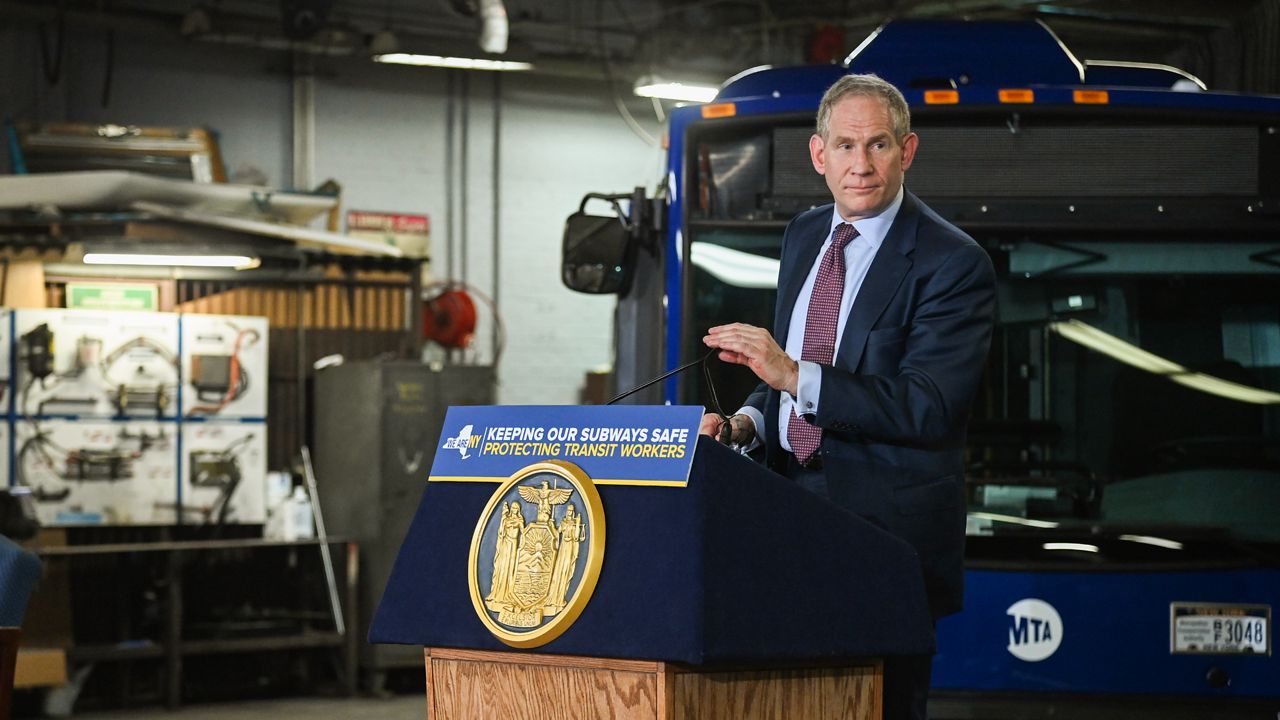MTA ridership is “not recovering as hoped,” and the transit authority faces difficult decisions that could leave the largest public transportation system in the country saddled with debt for decades, the state comptroller reported Thursday.
Rider fares covered 51.1% of the MTA’s operating costs in 2019, the last full year before the pandemic, state Comptroller Tom DiNapoli said. So far in 2022, fares cover only 31.9% of costs, far short of even the MTA’s low expectations, according to the report.
With federal aid set to run out in 2025 or earlier, the MTA plans to borrow half a billion dollars, but DiNapoli said that will only buy the agency a few years and leave them in debt until at least 2053.
“Unless there is an additional influx of city, state or federal aid, the MTA is facing stark options for closing its budget gaps that will impact riders,” DiNapoli said in a statement. “The MTA needs to lay out what is at stake and explain to the public what options it’s considering to close budget gaps and how it can adjust to continued low ridership levels and shift service to meet changes in demand.”
The MTA, for their part, said they are developing a plan that “assures continued strong mass transit in the post-COVID era.” MTA chief of external relations John McCarthy said in a statement that the MTA’s preliminary 2023 budget and a four-year financial plan will include proposed solutions when they are presented at public meetings next week.
Even as use of trains, buses, subways and ferries has increased since the worst days of the pandemic, weekday ridership in June was just 59% of the levels seen in June 2019. Weekend ridership was at 69%, the report said.
Metro-North Railroad and Long Island Rail Road weekday ridership in June was 61% and 63% of the commuter rails’ totals in the same month in 2019, respectively. In a good sign for the MTA, DiNapoli reported June weekend ridership on the train lines was 94% for the Metro-North and 101% for the Long Island Rail Road compared to June 2019.
DiNapoli also dismissed proposals from legislators to use congestion pricing funds to backfill the authority’s operations budget — something Brooklyn Assemblymember Robert Carroll called for in response to the report Thursday. The funds from congestion pricing, which would introduce a toll below 60th Street in Manhattan, are slated for MTA capital projects.
In June, Gov. Kathy Hochul said the implementation of congestion pricing will take a year or more, despite the law being passed in 2019.
“Using these funds for operations, while tempting, would create a substantial hole in the MTA’s capital program,” the report reads. “Given the need for continued debt issuance to undertake capital projects, this diversion of funding would worsen the agency’s debt burden.”
Transit advocacy organization Riders Alliance called for the MTA to prioritize faster, more reliable service to draw riders back to public transportation.
The writing on the walls is dire, but @MTA‘s looming fiscal disaster isn’t inevitable,” the group wrote on Twitter, warning the fare hikes and service cuts would push current and prospective riders away. “If the goal is to get ridership back to pre-pandemic levels, we need our transit system to serve post-pandemic travel patterns.”
In an interview with “Mornings On 1” in June, new NYC Transit President Richard Davey — who oversees the subway and bus system — said the MTA was considering service changes to account for lower ridership.
“We’re gonna have to think about potentially service changes, right? And so my team is now looking at rather than just a weekday and weekend kind of service, should we have a hybrid model on Mondays and Fridays, for example? So we’re looking at that. I’m not sure what that means quite yet. But we need to look at the ridership patterns,” he said.
